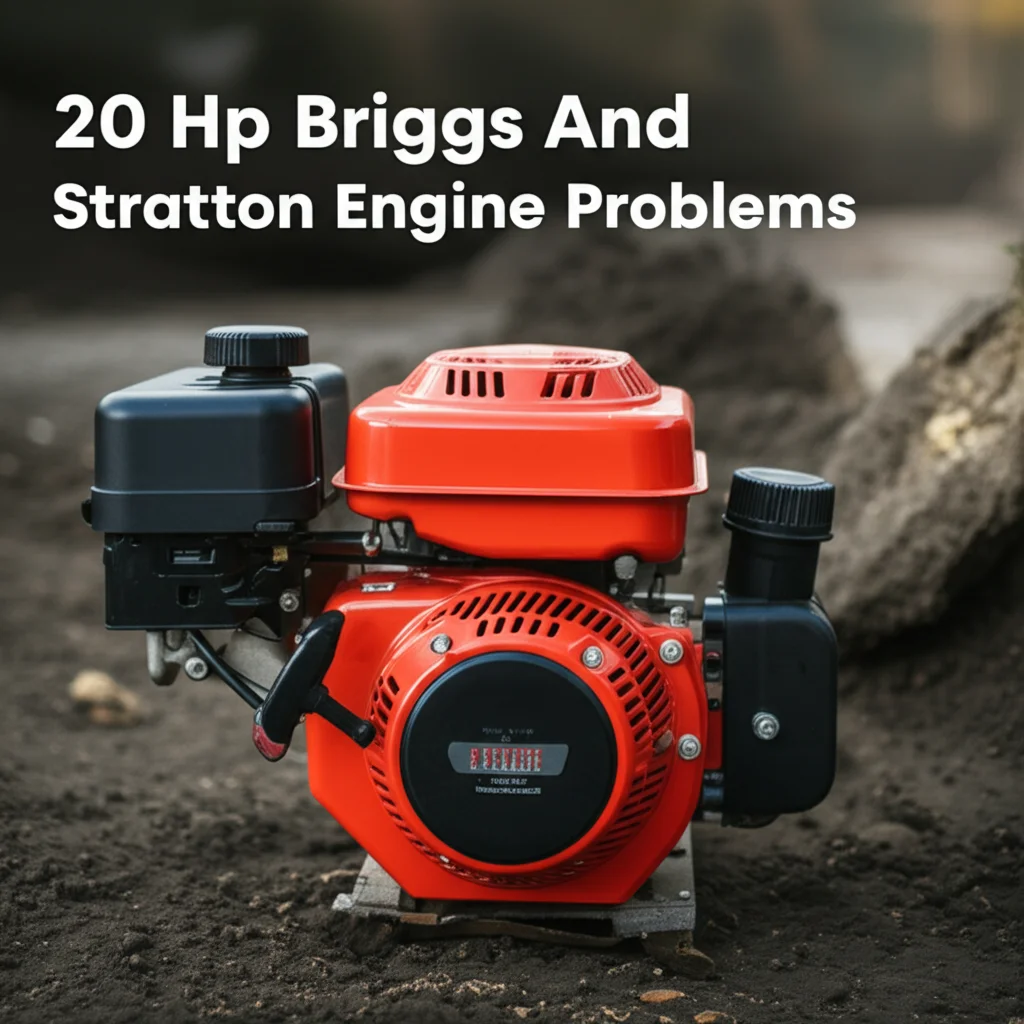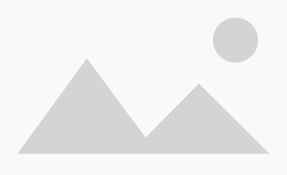· Stuart Martin · Lawn Mower Repair · 8 min read
20 Hp Briggs And Stratton Engine Problems

20 HP Briggs and Stratton Engine Problems: Troubleshooting Guide
Is your 20 HP Briggs and Stratton engine acting up? You’re not alone. These reliable engines power countless lawn mowers and outdoor equipment, but issues like starting problems, surging, or oil leaks can frustrate even seasoned users.
This comprehensive guide dives into common 20 HP Briggs and Stratton engine problems, offering practical troubleshooting steps and maintenance tips to keep your engine running smoothly. Let’s explore the issues, causes, and solutions to get your equipment back in action.
Takeaway:
- Diagnose issues systematically: check fuel, ignition, air, and compression systems.
- Regular maintenance prevents most problems.
- Use fresh fuel, clean filters, and proper oil levels.
- Consult a professional for complex repairs like valve adjustments or carburetor rebuilds.
Quick Answer: Common 20 HP Briggs and Stratton engine problems include failure to start, surging, oil leaks, and backfiring. These often stem from stale fuel, clogged carburetors, faulty spark plugs, or improper valve clearance. Regular maintenance and systematic troubleshooting can resolve most issues.
Why Do Briggs and Stratton Engines Fail?
The most common reason a Briggs and Stratton engine won’t run correctly is neglected maintenance, particularly in the fuel and air systems. Stale fuel, clogged carburetors, or dirty air filters disrupt the air-fuel mixture, causing starting issues or rough running. Other culprits include ignition problems (worn spark plugs or faulty coils) and compression issues from improper valve clearance. Regular tune-ups, as recommended by Briggs & Stratton, can prevent these issues.
Common Causes of Engine Failure
- Stale Fuel: Gasoline older than 30 days can turn into varnish, clogging the carburetor.
- Dirty Air Filter: Restricts airflow, causing poor combustion.
- Ignition Issues: Worn spark plugs or faulty ignition coils prevent sparking.
- Compression Problems: Incorrect valve clearance or leaks reduce power.
Troubleshooting a 20 HP Briggs and Stratton That Won’t Start
A 20 HP Briggs and Stratton engine that won’t start is a common complaint. The issue often lies in the fuel, ignition, or compression systems. Start with the basics and work systematically to pinpoint the problem.
Step-by-Step Troubleshooting
- Check Fuel Quality: Ensure the tank has fresh, clean fuel. Drain stale gas and replace it with fresh gasoline.
- Inspect the Spark Plug: Remove the spark plug, ground it against the engine, and crank to check for spark. No spark? Replace the plug or test the ignition coil.
- Examine the Fuel System: Verify the fuel shut-off valve is open and the fuel filter isn’t clogged.
- Test Compression: Use a leak-down tester to check for compression issues, which may indicate valve problems.
- Check the Flywheel Brake: Ensure the brake bar is fully disengaged before pulling the starter cord.
If these steps don’t resolve the issue, consult a Briggs & Stratton dealer for advanced diagnostics. For more on starting issues, see Briggs and Stratton troubleshooting won’t start.
Addressing Engine Surging Issues
Surging—when the engine speeds up and slows down repeatedly—signals a fuel delivery problem. This is common in 20 HP Briggs and Stratton V-Twin engines and often points to a carburetor issue.
Causes of Surging
- Clogged Carburetor: Varnish from old fuel blocks jets, disrupting the air-fuel mix.
- Fuel Cap Vent Blockage: A clogged vent restricts fuel flow.
- Dirty Fuel Filter: Reduces fuel supply, causing inconsistent running.
- Vacuum Leaks: Cracked fuel or vacuum lines allow air into the system.
How to Fix Surging
- Replace the fuel filter and ensure the fuel cap vent is clear.
- Clean the carburetor thoroughly with carb cleaner or soak it in a solution like Sea Foam.
- Inspect fuel and vacuum lines for cracks and replace if necessary.
- If the problem persists, rebuild the carburetor using a kit or consult a professional. For detailed carburetor fixes, check Briggs and Stratton carburetor troubleshooting guide.
Oil Leaks and Fuel in Oil Issues
Finding oil leaks or gasoline in the crankcase is alarming. These issues can damage your 20 HP Briggs and Stratton engine if not addressed promptly.
Common Causes
- Leaking Valve Cover Gasket: Worn or improperly sealed gaskets allow oil to escape.
- Faulty Fuel Pump Diaphragm: A damaged diaphragm can leak fuel into the crankcase.
- Carburetor Float Issues: A stuck float allows fuel to flood the engine, mixing with oil.
Solutions
- Replace the valve cover gasket if oil is leaking. See Briggs and Stratton V-Twin oil leak.
- Install a new fuel pump diaphragm to prevent fuel from entering the crankcase.
- Check and replace the carburetor needle and seat if the float is sticking.
- Drain contaminated oil, flush the crankcase, and refill with the correct oil (typically 48 oz of SAE 30 for a 20 HP engine).
Valve Clearance and Compression Problems
Proper valve clearance is critical for engine performance. Incorrect settings can cause starting issues, power loss, or backfiring in a 20 HP Briggs and Stratton engine.
Valve Clearance Specs
- Intake Valve: 0.003–0.005 inches
- Exhaust Valve: 0.005–0.007 inches
How to Check and Adjust
- Remove the valve cover to access the valves.
- Use a feeler gauge to measure clearance between the valve stem and rocker arm.
- Adjust by loosening or tightening the rocker arm nut to achieve the correct clearance.
- Reinstall the valve cover with a new gasket to prevent leaks.
If compression is low, perform a leak-down test to identify issues like worn piston rings or valves. For persistent problems, visit a Briggs & Stratton dealer.
Ignition System Failures
Ignition issues, such as no spark or weak spark, prevent the engine from starting or cause rough running. The ignition system includes the spark plug, ignition coil, and stop switch.
Troubleshooting Ignition
- Test the Spark Plug: Ground the plug and check for a strong spark. Replace if fouled or worn.
- Inspect the Ignition Coil: Use a multimeter to test coil resistance. Replace if faulty.
- Check the Stop Switch: Ensure it’s in the RUN position and test for continuity.
- Examine the Flywheel Key: A sheared key disrupts timing, requiring replacement.
For more on ignition issues, see Briggs and Stratton Intek V-Twin problems.
Overheating and Knocking Sounds
Overheating can cause severe damage, often leading to knocking sounds in a 20 HP Briggs and Stratton V-Twin engine. This is commonly due to dirty cooling fins or low oil levels.
Causes of Overheating
- Dirty Cooling Fins: Debris blocks airflow, insulating the engine.
- Low Oil Levels: Insufficient lubrication increases friction and heat.
- Valve Guide Issues: Overheating can loosen valve guides, causing knocking.
Fixes
- Clean cooling fins under the blower housing at least annually.
- Check oil levels and top off with SAE 30 oil (48 oz capacity).
- Inspect valve guides and replace the cylinder head if damaged.
Maintenance Tips to Prevent Problems
Regular maintenance is key to avoiding 20 HP Briggs and Stratton engine problems. Follow these steps to keep your engine in top shape:
- Change Oil Annually: Use 48 oz of SAE 30 oil, changed every 50 hours or yearly.
- Replace Filters: Swap air and fuel filters seasonally.
- Use Fresh Fuel: Drain old gas and use fuel less than 30 days old.
- Clean the Carburetor: Soak in cleaner annually to prevent varnish buildup.
- Store Properly: Run the engine dry or use a fuel stabilizer for winter storage.
For more maintenance tips, refer to the Briggs and Stratton 20 HP Intek V-Twin engine manual.
FAQ Section
What is the most common reason a Briggs & Stratton engine won’t run correctly?
Neglected maintenance, especially stale fuel or a clogged carburetor, is the top reason. Old gas forms varnish, blocking fuel flow, while dirty air filters restrict airflow. Regular tune-ups, fresh fuel, and clean filters prevent most issues.
What is the valve clearance on a 20 HP Briggs and Stratton?
The valve clearance is 0.003–0.005 inches for the intake valve and 0.005–0.007 inches for the exhaust valve. Check and adjust using a feeler gauge to ensure proper engine performance.
How much oil does a 20 HP Briggs and Stratton engine need?
A 20 HP Briggs and Stratton engine typically requires 48 ounces (1.5 quarts) of SAE 30 oil. Check the dipstick to confirm proper levels and change oil every 50 hours or annually.
Why does my engine surge?
Surging is usually caused by a clogged carburetor, blocked fuel cap vent, or dirty fuel filter. Clean the carburetor, replace the filter, and ensure the fuel cap vent is clear to resolve the issue.
Why is there fuel in my engine’s oil?
Fuel in the oil often results from a faulty fuel pump diaphragm or a stuck carburetor float. Replace the diaphragm or needle and seat, then drain and refill the oil to prevent engine damage.
What causes my engine to backfire?
Backfiring can stem from improper valve clearance, a lean fuel mixture, or ignition timing issues. Adjust valves, clean the carburetor, and check the flywheel key to address the problem.
How do I fix an engine that starts but won’t stay running?
Check for stale fuel, a clogged carburetor, or a faulty fuel pump. Replace the fuel filter, clean the carburetor, and ensure fresh gas is used. If the issue persists, test the ignition system.
Final Words
Dealing with 20 HP Briggs and Stratton engine problems can be frustrating, but most issues—like starting failures, surging, or oil leaks—are manageable with proper troubleshooting. Regular maintenance, including fresh fuel, clean filters, and timely oil changes, prevents many problems. Use this guide to diagnose and fix issues, and don’t hesitate to consult a professional for complex repairs. Keep your engine running smoothly—check out Briggs and Stratton lawn mower starts then dies for more tips!



